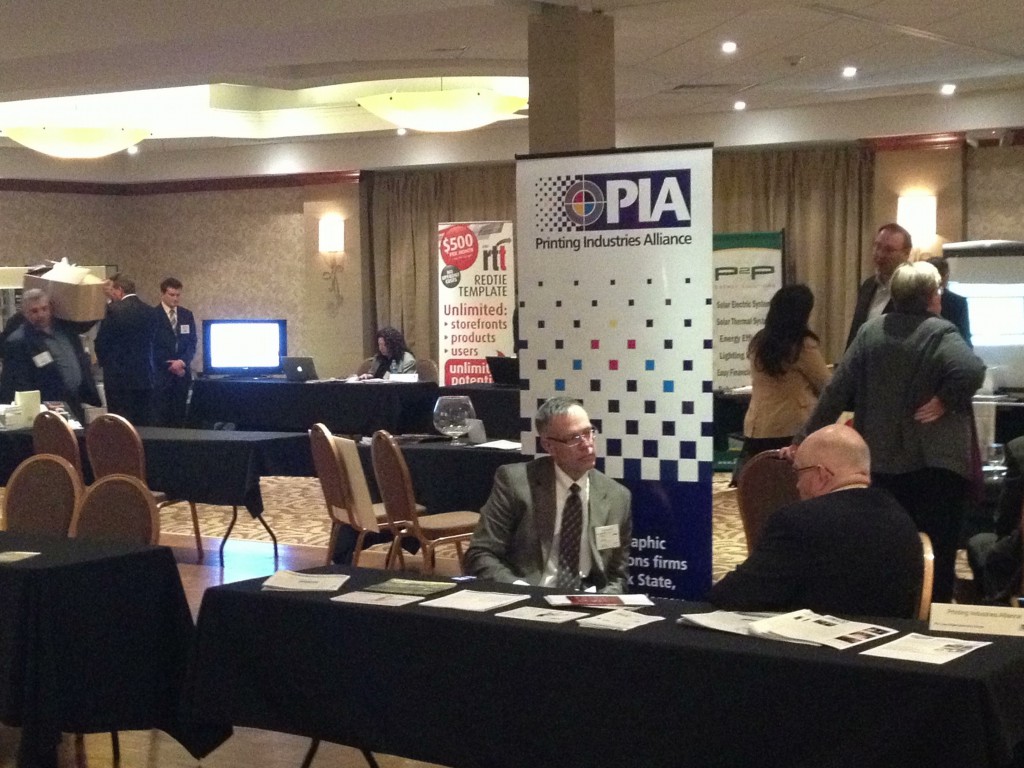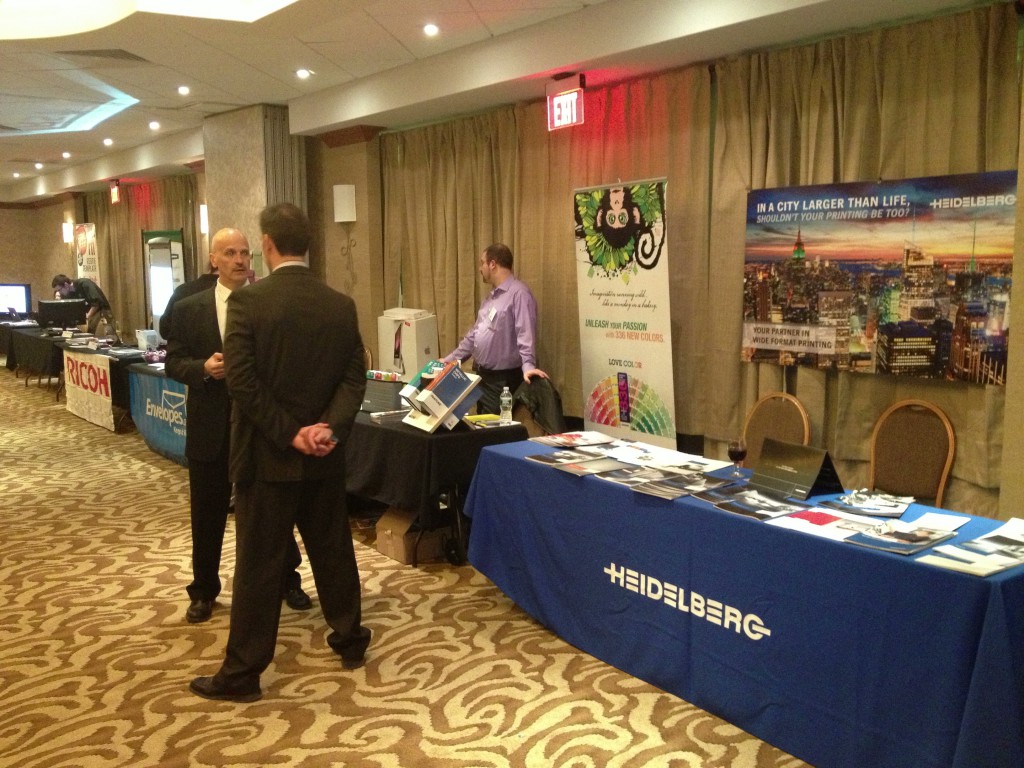Regional printing trade shows mostly are things of the past—just try to find anyone these days who remembers the Graph Tech expos for the Northeast or the Gutenberg Festivals that once tried to take root on the West Coast. Vendors can’t justify the expense of exhibiting at these local affairs, and printers can’t find the time to attend them. Besides, isn’t pretty much everything we need to know about equipment, technology, business trends, and our counterparts in the printing industry available right here on the Internet?
All of the above may be true, but in spite of that, members of the industry still find value in the knowledge-sharing camaraderie that only face-to-face encounters can provide. At its “Innovation Forum” on the evening of March 20, the Long Island branch of Printing Industries Alliance (PIA) offered about 150 registered attendees the opportunity to come together for just such a program: a business networking exchange for graphic communications professionals, complete with educational sessions and displays by more than two dozen sponsoring exhibitors.
The event, held at the Holiday Inn in Plainview, NY, lasted for only three hours, and the displays consisted mainly of literature on table tops. It may not have been a “trade show” in the strictest or even a loose sense of that term, but it was a welcome demonstration of industry solidarity that PIA president Tim Freeman was correct to call a “win-win” for everyone who participated.
It also was a successful second try at hosting a get-together that Hurricane Sandy forced PIA to cancel when that killer storm blew through the area last October. Since then, Freeman and fellow PIA stalwart Bill Dirzulaitis have been working the phones in an effort to rekindle interest. Freeman gives Dirzulaitis—the former president of what used to be the New York City metro area’s largest printing trade association—much of the credit for driving the turnout.
Freeman also saluted his Long Islanders for being “probably the best group we have” in terms of member activism within PIA, a trade group serving New York State, northern New Jersey, and northwestern Pennsylvania.
And while the exhibits may have been small, the names behind them weren’t, with HP, Xerox, Heidelberg, KBA, and other national and local providers lending their prestige to the gathering as they interacted with their Long Island customers. HP earned extra attention by hosting the open bar and buffet that refreshed attendees throughout the evening.
 Tim Freeman, president, Printing Industries Alliance
Tim Freeman, president, Printing Industries Alliance
A pair of educational sessions addressed topics that are. or should be, of high interest to printers on Long Island and everywhere else: opportunities in high-volume inkjet production; and strategies for mergers and acquisitions (M&As) in an environment that, sooner or later, may require most print business owners to choose between selling their firms or absorbing other companies.
Fred Simonson, a consultant with Gimbel & Associates, surveyed available high-volume inkjet printing technologies and offered guidelines for investing in them. To achieve ROI with one of these presses, he said, a printing company should be capable of placing at least 10 million pages per month on it in one of the “sweet spot” product categories for inkjet: transactional printing, direct mail, and books.
According to Simonson, the investment in an “entry level” inkjet press can run from $2 million to $2.5 million when the costs of the controller, software, pre- and post-feeders, training, and other necessities are factored in. Given a sustained workload in the right applications, he said, the economics of print manufacturing with equipment of this kind can be “very favorable—but you need to drive that printer all the time.”
Printers also must remember that the interaction of water-based ink, paper, and heat in an inkjet production run sometimes “does some strange things” to the quality of what’s being printed. “You’re literally changing the physics of that sheet of paper” when putting it through an inkjet press, said Simonson, who recommended running on pre-treated or coated paper for the best results.
New Direction Partners (NDP) is a consultancy that brokers and manages M&As within the graphic communications industry. Peter Schaefer, its representative at the Innovation Forum, said that these transactions “have become a mode of survival in the printing industry” because of the shrinkage of the demand for print and the resulting contraction of the industry’s business base.
Another piece of handwriting on the wall, said Schaefer, is the fact that “printing is one of the most fragmented industries in the United States, and fragmented industries inevitably consolidate.”
As Schaefer described them, well executed M&As are proactive and profitable responses to this looming trend for buyers and sellers alike. Print company owners who are finding organic growth hard to achieve can obtain the broader customer base and capabilities they need by purchasing these assets from other companies. By agreeing to be acquired, owners ready to exit the business can do so gracefully without having to resort to liquidation or other equally unattractive alternatives.
Schaefer reviewed various types of M&A transactions and discussed characteristics that make printing companies desirable or undesirable as acquisition targets. He also noted that multiple of EBITDA, the primary yardstick for determining selling price, now averages between 4 and 5 for printing companies that are healthy and growing or have a specialty that other firms will want to acquire.
Printing Industries Alliance has headquarters in Amherst, NY, and an office for the New York-New Jersey metro area in Roselle Park, NJ. Upcoming events include a 10-hour OSHA outreach for printers and a two-day human resources conference.


